Hongsheng Chen
VQCNIR: Clearer Night Image Restoration with Vector-Quantized Codebook
Dec 16, 2023Abstract:Night photography often struggles with challenges like low light and blurring, stemming from dark environments and prolonged exposures. Current methods either disregard priors and directly fitting end-to-end networks, leading to inconsistent illumination, or rely on unreliable handcrafted priors to constrain the network, thereby bringing the greater error to the final result. We believe in the strength of data-driven high-quality priors and strive to offer a reliable and consistent prior, circumventing the restrictions of manual priors. In this paper, we propose Clearer Night Image Restoration with Vector-Quantized Codebook (VQCNIR) to achieve remarkable and consistent restoration outcomes on real-world and synthetic benchmarks. To ensure the faithful restoration of details and illumination, we propose the incorporation of two essential modules: the Adaptive Illumination Enhancement Module (AIEM) and the Deformable Bi-directional Cross-Attention (DBCA) module. The AIEM leverages the inter-channel correlation of features to dynamically maintain illumination consistency between degraded features and high-quality codebook features. Meanwhile, the DBCA module effectively integrates texture and structural information through bi-directional cross-attention and deformable convolution, resulting in enhanced fine-grained detail and structural fidelity across parallel decoders. Extensive experiments validate the remarkable benefits of VQCNIR in enhancing image quality under low-light conditions, showcasing its state-of-the-art performance on both synthetic and real-world datasets. The code is available at https://github.com/AlexZou14/VQCNIR.
An Electromagnetic-Information-Theory Based Model for Efficient Characterization of MIMO Systems in Complex Space
Jan 13, 2023



Abstract:It is the pursuit of a multiple-input-multiple-output (MIMO) system to approach and even break the limit of channel capacity. However, it is always a big challenge to efficiently characterize the MIMO systems in complex space and get better propagation performance than the conventional MIMO systems considering only free space, which is important for guiding the power and phase allocation of antenna units. In this manuscript, an Electromagnetic-Information-Theory (EMIT) based model is developed for efficient characterization of MIMO systems in complex space. The group-T-matrix-based multiple scattering fast algorithm, the mode-decomposition-based characterization method, and their joint theoretical framework in complex space are discussed. Firstly, key informatics parameters in free electromagnetic space based on a dyadic Green's function are derived. Next, a novel group-T-matrix-based multiple scattering fast algorithm is developed to describe a representative inhomogeneous electromagnetic space. All the analytical results are validated by simulations. In addition, the complete form of the EMIT-based model is proposed to derive the informatics parameters frequently used in electromagnetic propagation, through integrating the mode analysis method with the dyadic Green's function matrix. Finally, as a proof-or-concept, microwave anechoic chamber measurements of a cylindrical array is performed, demonstrating the effectiveness of the EMIT-based model. Meanwhile, a case of image transmission with limited power is presented to illustrate how to use this EMIT-based model to guide the power and phase allocation of antenna units for real MIMO applications.
* 13 pages, 14 figures
DPCRN: Dual-Path Convolution Recurrent Network for Single Channel Speech Enhancement
Jul 12, 2021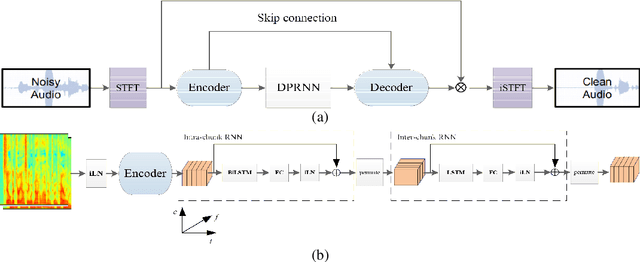
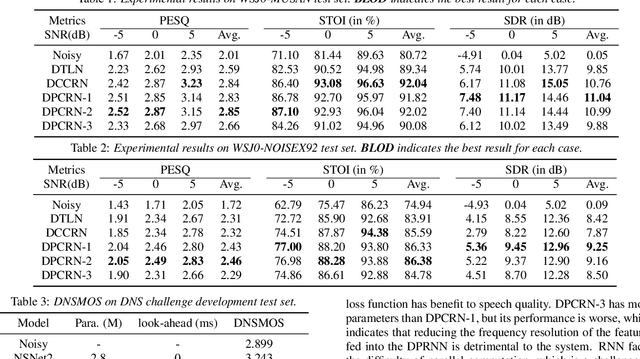
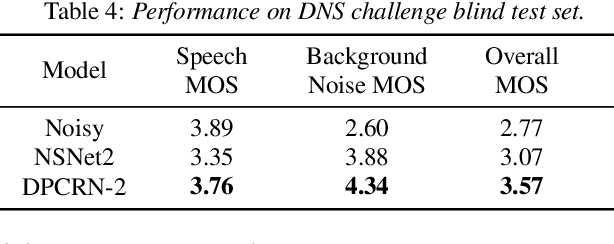
Abstract:The dual-path RNN (DPRNN) was proposed to more effectively model extremely long sequences for speech separation in the time domain. By splitting long sequences to smaller chunks and applying intra-chunk and inter-chunk RNNs, the DPRNN reached promising performance in speech separation with a limited model size. In this paper, we combine the DPRNN module with Convolution Recurrent Network (CRN) and design a model called Dual-Path Convolution Recurrent Network (DPCRN) for speech enhancement in the time-frequency domain. We replace the RNNs in the CRN with DPRNN modules, where the intra-chunk RNNs are used to model the spectrum pattern in a single frame and the inter-chunk RNNs are used to model the dependence between consecutive frames. With only 0.8M parameters, the submitted DPCRN model achieves an overall mean opinion score (MOS) of 3.57 in the wide band scenario track of the Interspeech 2021 Deep Noise Suppression (DNS) challenge. Evaluations on some other test sets also show the efficacy of our model.
Nonlinear Residual Echo Suppression Based on Multi-stream Conv-TasNet
May 15, 2020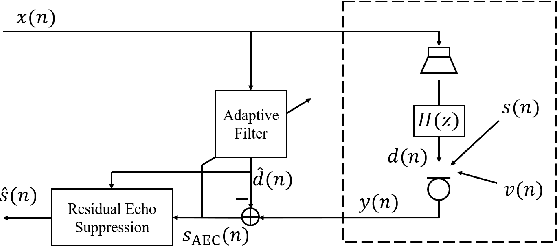
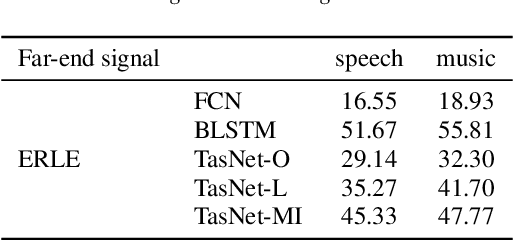
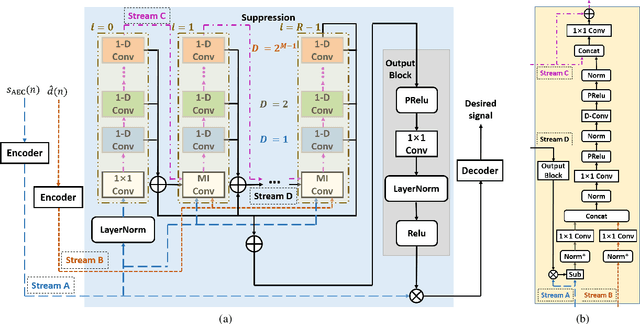
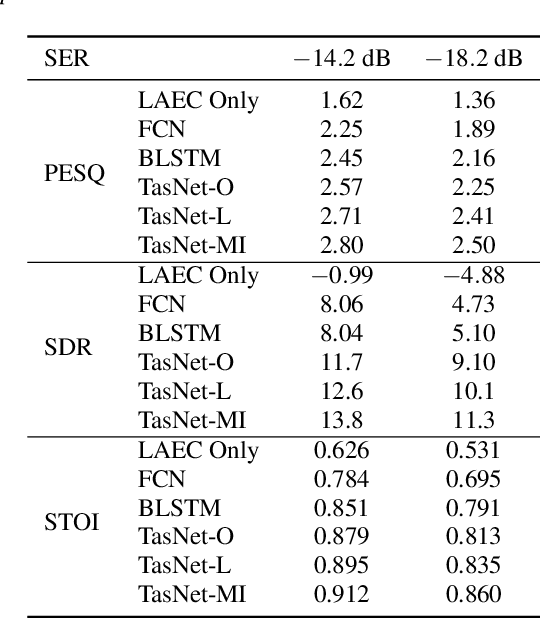
Abstract:Acoustic echo cannot be entirely removed by linear adaptive filters due to the nonlinear relationship between the echo and far-end signal. Usually a post processing module is required to further suppress the echo. In this paper, we propose a residual echo suppression method based on the modification of fully convolutional time-domain audio separation network (Conv-TasNet). Both the residual signal of the linear acoustic echo cancellation system, and the output of the adaptive filter are adopted to form multiple streams for the Conv-TasNet, resulting in more effective echo suppression while keeping a lower latency of the whole system. Simulation results validate the efficacy of the proposed method in both single-talk and double-talk situations.
 Add to Chrome
Add to Chrome Add to Firefox
Add to Firefox Add to Edge
Add to Edge